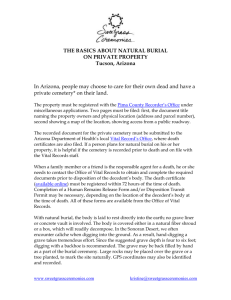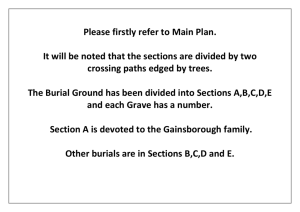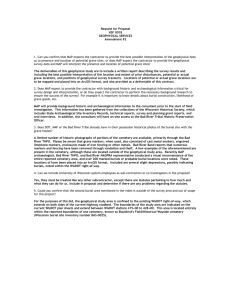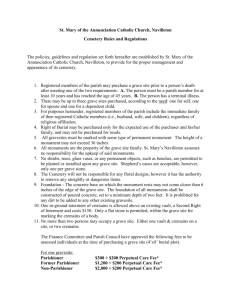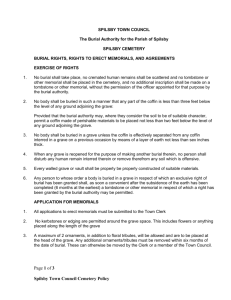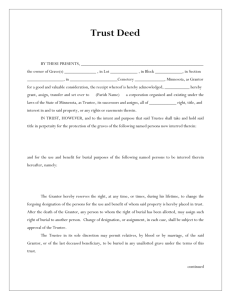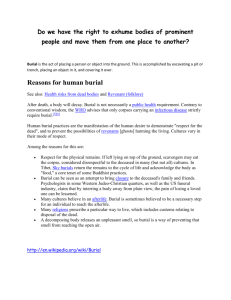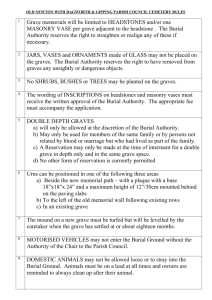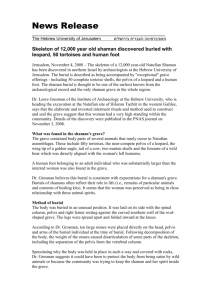Askundertaker615T2
advertisement
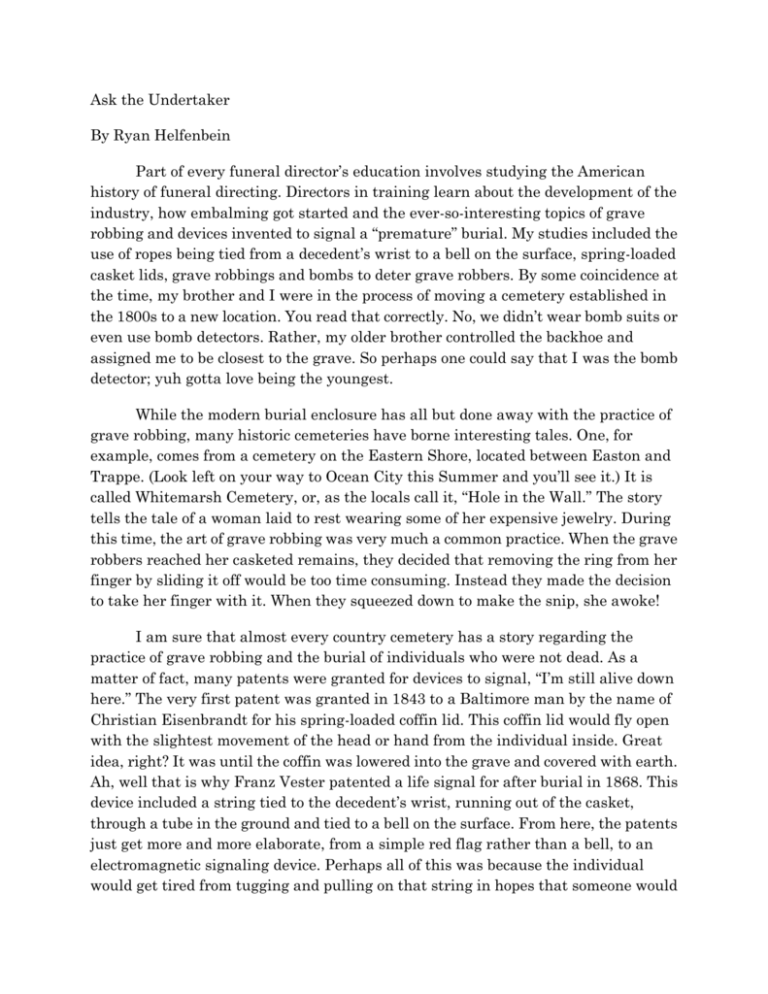
Ask the Undertaker By Ryan Helfenbein Part of every funeral director’s education involves studying the American history of funeral directing. Directors in training learn about the development of the industry, how embalming got started and the ever-so-interesting topics of grave robbing and devices invented to signal a “premature” burial. My studies included the use of ropes being tied from a decedent’s wrist to a bell on the surface, spring-loaded casket lids, grave robbings and bombs to deter grave robbers. By some coincidence at the time, my brother and I were in the process of moving a cemetery established in the 1800s to a new location. You read that correctly. No, we didn’t wear bomb suits or even use bomb detectors. Rather, my older brother controlled the backhoe and assigned me to be closest to the grave. So perhaps one could say that I was the bomb detector; yuh gotta love being the youngest. While the modern burial enclosure has all but done away with the practice of grave robbing, many historic cemeteries have borne interesting tales. One, for example, comes from a cemetery on the Eastern Shore, located between Easton and Trappe. (Look left on your way to Ocean City this Summer and you’ll see it.) It is called Whitemarsh Cemetery, or, as the locals call it, “Hole in the Wall.” The story tells the tale of a woman laid to rest wearing some of her expensive jewelry. During this time, the art of grave robbing was very much a common practice. When the grave robbers reached her casketed remains, they decided that removing the ring from her finger by sliding it off would be too time consuming. Instead they made the decision to take her finger with it. When they squeezed down to make the snip, she awoke! I am sure that almost every country cemetery has a story regarding the practice of grave robbing and the burial of individuals who were not dead. As a matter of fact, many patents were granted for devices to signal, “I’m still alive down here.” The very first patent was granted in 1843 to a Baltimore man by the name of Christian Eisenbrandt for his spring-loaded coffin lid. This coffin lid would fly open with the slightest movement of the head or hand from the individual inside. Great idea, right? It was until the coffin was lowered into the grave and covered with earth. Ah, well that is why Franz Vester patented a life signal for after burial in 1868. This device included a string tied to the decedent’s wrist, running out of the casket, through a tube in the ground and tied to a bell on the surface. From here, the patents just get more and more elaborate, from a simple red flag rather than a bell, to an electromagnetic signaling device. Perhaps all of this was because the individual would get tired from tugging and pulling on that string in hopes that someone would come strolling by their grave, who knows? At this point you may be wondering, what, if anything besides advances in modern medicine, stand between life and premature burial. The short answer is embalming. In the mid 1800s, embalming was very expensive and mostly used when fallen soldiers were far from home and had to be returned, usually by railroad, to their families for burial. People who lived in rural areas simply were not embalmed before they were buried. As the practice has become more widespread, the incidence of the accidental burial of the living has gone by the way side. As for grave robbings, modern burial enclosures assisted in ending this early brand of shoplifting. The first burial enclosures were created in the 1930s by a nonprofit organization and were made from concrete formed into the shape of a box with a lid that just sat on top. Today’s options are triple-lined and sealed, and can even be customized with everything from photos of the individual’s hobbies to personalized plaques. In addition to the use of burial enclosures, take notice the next time you attend a burial ceremony at a cemetery and watch the funeral home staff. You will see that one of them always stays behind. They do this to be sure that the burial enclosure is closed properly and no one disturbs the decedent or their belongings. My brother and I moved those 15 graves dating back to the 1800s and, no, we were not blown up, didn’t see a bell ring or ever come across the workings of an electromagnetic thingamajig. Perhaps those individuals that we escorted to their new places of rest had undertakers staying behind after the conclusion of their services too. This proves I imagine that we don’t have to be movie stars to have a “body guard” at least once while here on earth. Ryan, owner/supervising mortician and preplanning counselor at Lasting Tributes on Bestgate Road in Annapolis, offers area residents solutions to high-cost funerals. He can be reached at 410.897.4852 or Ryan@LastingTributesFuneralCare.com
